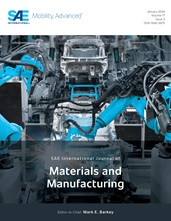Shorter product cycles, a high awareness for comfort properties on the customer side and an increasingly strict legislation with respect to environmental issues make the development of friction materials more and more challenging. In contrast to many other engineering tasks, nearly no software tools are available to the material developer, which systematically support the development process with simulations.
This work focuses on the time-dependent three-dimensional heat distribution inside a pad material and shows, how heterogeneous material mixtures can be modeled, such that a prediction of non-stationary temperature fields becomes possible. In this context, a strategy is suggested, how the thermal interaction between pad and disk and the aspects of energy dissipation and heat partitioning can be described appropriately.
The outcome is a simulation system that not only returns local temperature values for arbitrary boundary conditions, but which also makes a prediction of heat-induced physical and chemical phenomena possible, as they occur inside the material. Different case studies show how e.g. the oxidation of certain components or the degassing of the organic binder can be described. These concepts allow the material developer to systematically and virtually compare material variants in the early stage of a development process and to reduce the need for extensive prototyping and testing.
